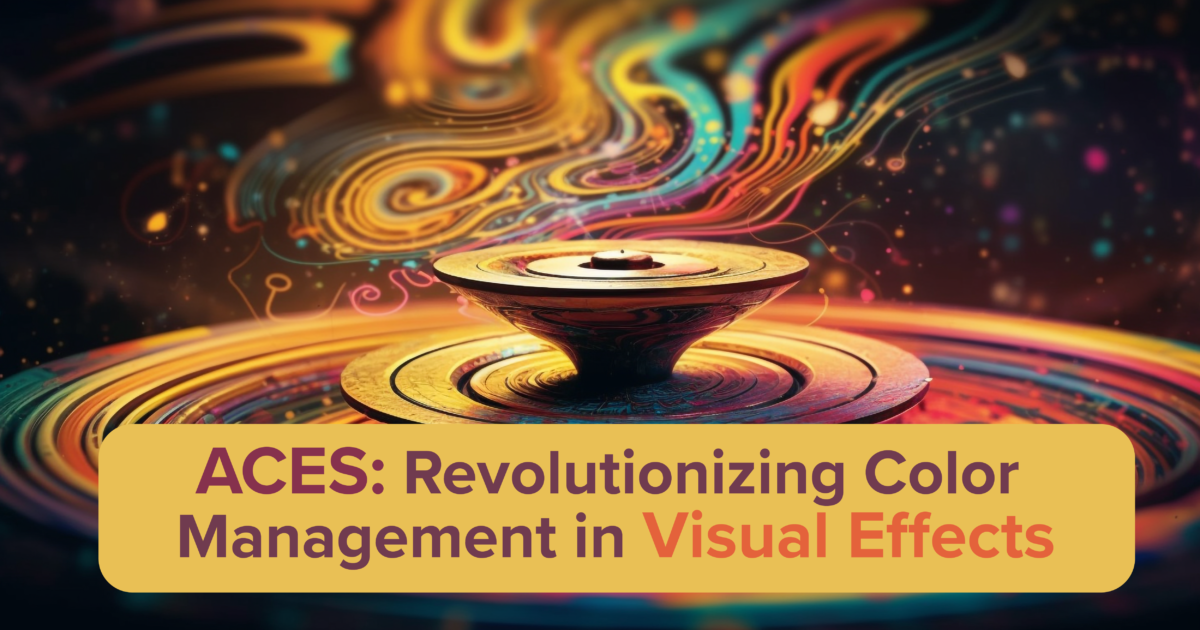ACES: Revolutionizing Color Management in Visual Effects

ACES, which stands for the Academy Color Encoding System, is a standardized color management system developed by the Academy of Motion Picture Arts and Sciences (AMPAS). It is designed to ensure consistent and accurate color representation in the motion picture and visual effects industry. ACES addresses the challenges of managing color throughout the entire digital production and post-production process, from image capture to final display.
COLOR SPACE.
ACES defines a specific color space called the ACES Color Space. It is a wide-gamut, high-dynamic-range (HDR) color space that can capture a broader range of colors and luminance values than conventional color spaces. This wide gamut is essential for accurately representing real-world colors and lighting conditions.
SCENE – REFERRED
ACES follows a scene-referred approach, which means it aims to capture and maintain the characteristics of the scene as they are perceived by the camera or human eye. This approach is critical for achieving consistent and realistic color representation in visual effects and filmmaking.
STANDARDIZATION
ACES provides a standardized color workflow, ensuring that color is handled consistently across different devices, software applications, and stages of production. This standardization simplifies collaboration and ensures that the intended look is maintained throughout the entire production pipeline.
Color Transforms
ACES includes a set of color transforms, also known as the ACES Input Transforms and Output Transforms. These transforms allow for the conversion of images from various camera formats and display devices into the ACES color space and back, ensuring that color is accurately interpreted and displayed.
METADATA
ACES incorporates metadata that contains information about the color space, color transforms, and other color-related data. This metadata is essential for proper color management and consistency.
FLEXIBILITY
While ACES provides a standardized framework, it also allows for creative flexibility. Filmmakers and visual effects artists can make artistic decisions within the ACES environment, ensuring that the color grading and visual effects process remains creative and dynamic.
ARCHIVING AND PRESERVATION
ACES is valuable for archiving digital content.By adhering to a standardized color space and metadata, it ensures that digital assets can be preserved and accurately accessed in the future, even as technology evolves.
IMPORTANCE OF ACES COLOR SPACE IN VISUAL EFFECTS:
CONSISTENCY ACROSS DEVICES AND SOFTWARE
ACES provides a standardized color space and a consistent color workflow, ensuring that color looks the same across different devices, software applications, and throughout the entire VFX pipeline. This is vital in VFX because multiple professionals may work on a single project using various tools and hardware.
WIDE GAMUT AND DYNAMIC RANGE
ACES can represent a broader range of colors and a higher dynamic range compared to traditional color spaces. This is particularly important in VFX because it allows for the capture and manipulation of a wider range of colors and luminance values, making it possible to work with a more extensive palette of visual effects.
MATCHING LIVE-ACTION AND CGI
In visual effects, it is often necessary to seamlessly integrate computer-generated imagery (CGI) with live-action footage. ACES helps in matching the color and lighting of CGI elements to the live-action scenes, making the effects appear more realistic and integrated.
QUALITY CONTROL
ACES provides a robust system for quality control and color management throughout the production process. This ensures that colors are consistent and accurate from the initial shooting stage to the final delivery.
Collaboration: ACES facilitates collaboration among different departments and teams working on a visual effects project. By providing a common color reference, reduces the chances of miscommunication and ensures that everyone involved is on the same page regarding the intended color scheme.
In summary, ACES is of paramount importance in visual effects as it standardizes color management, ensures consistency, and allows for a broader and more realistic range of color and dynamic range, all of which are crucial for achieving high-quality and visually stunning VFX in film and other media.
Similar Articles
-

Breaking Down the 7 Core UX Design Principles 04-07-2025
Ever wondered why certain apps or websites feel intuitive and effortle
-

Understanding the Different Types of Graphic Design 04-07-2025
Have you ever stopped to think about how much of the world around you
-

Mastering 2D and 3D Animation 03-04-2025
The Ultimate Career Boost in Today’s Creative Industry The demand fo
-

How to Make a Graphic Design Portfolio? 02-27-2025
Imagine walking into a room full of potential clients or employers, bu
